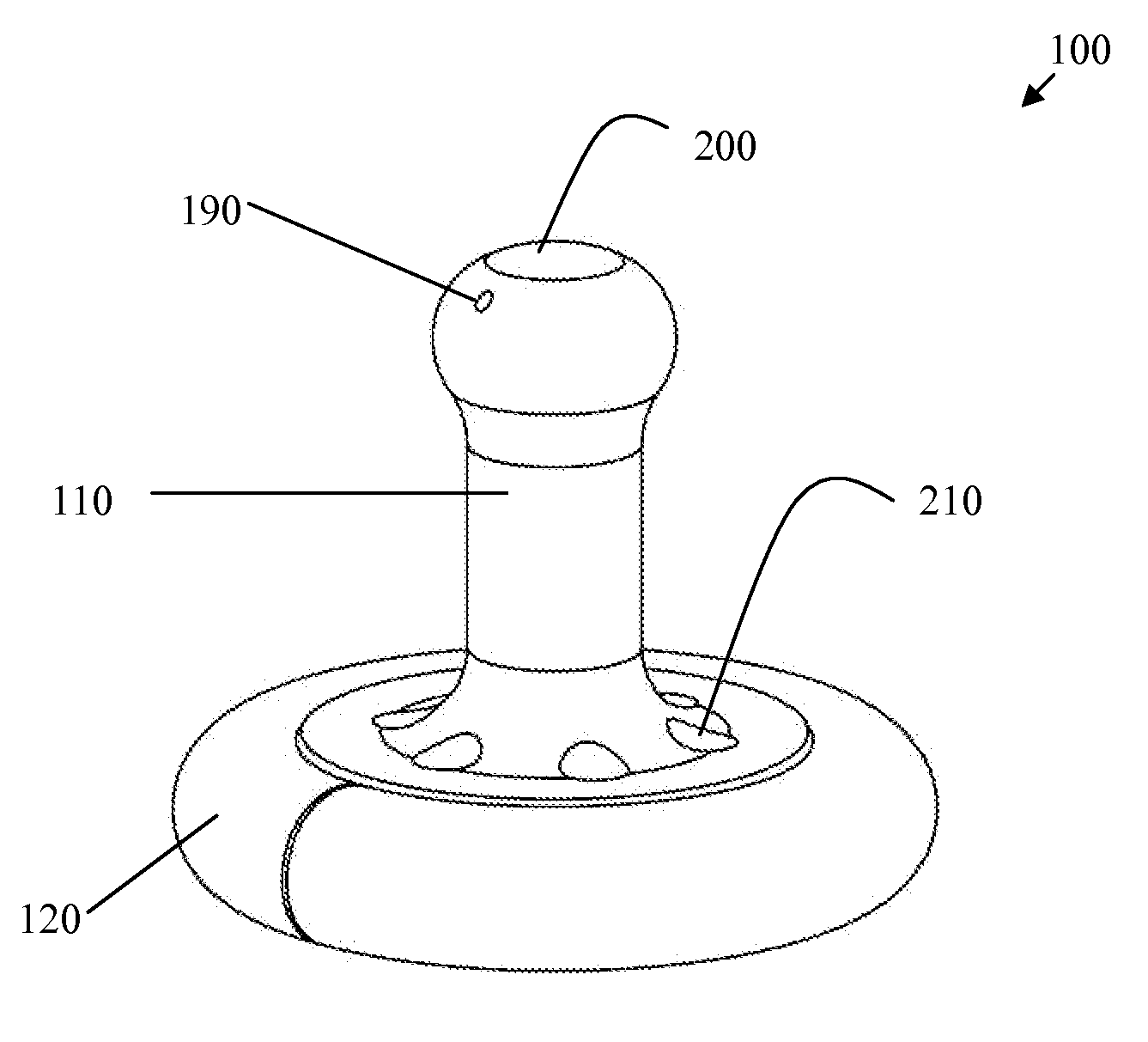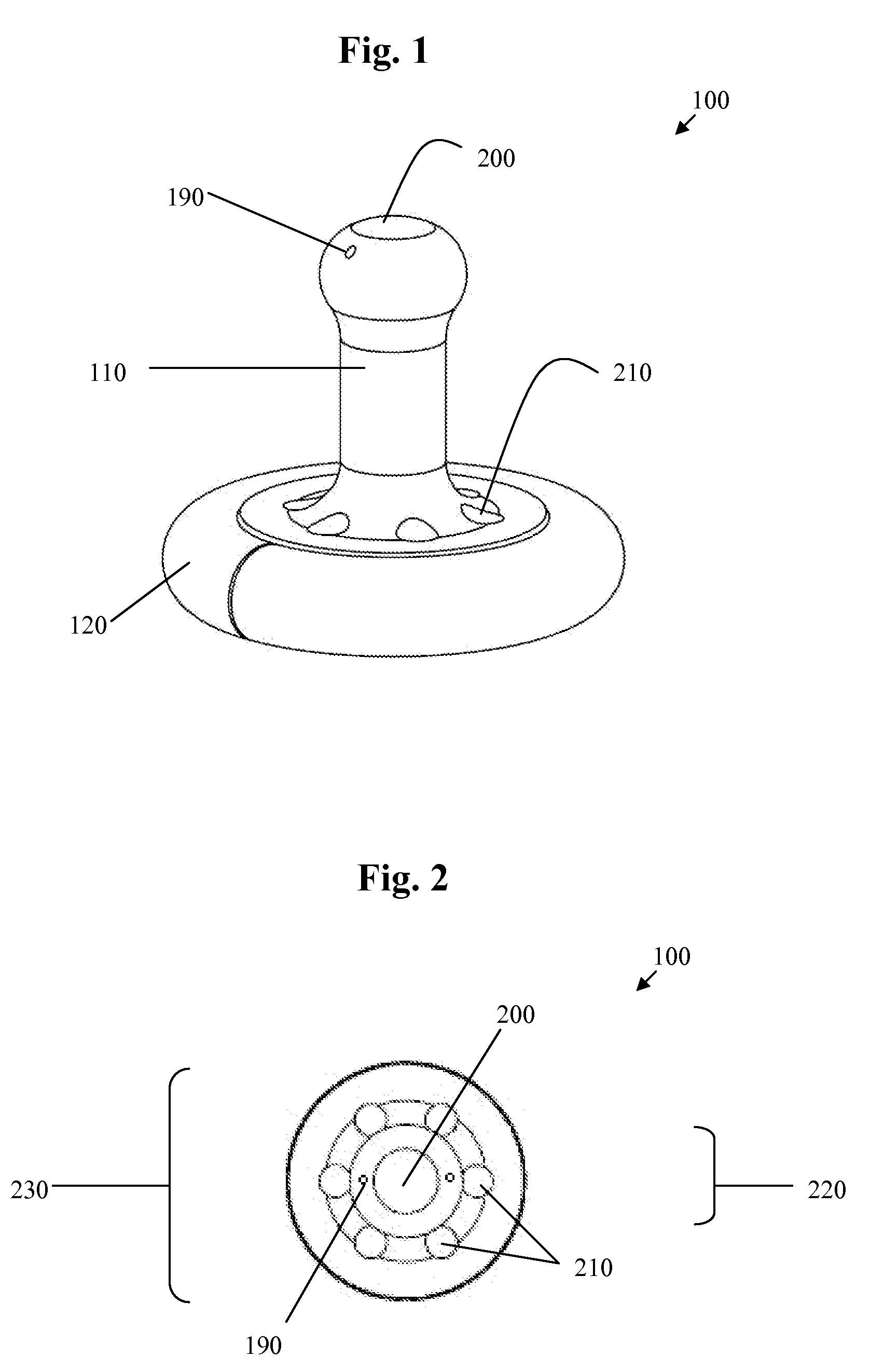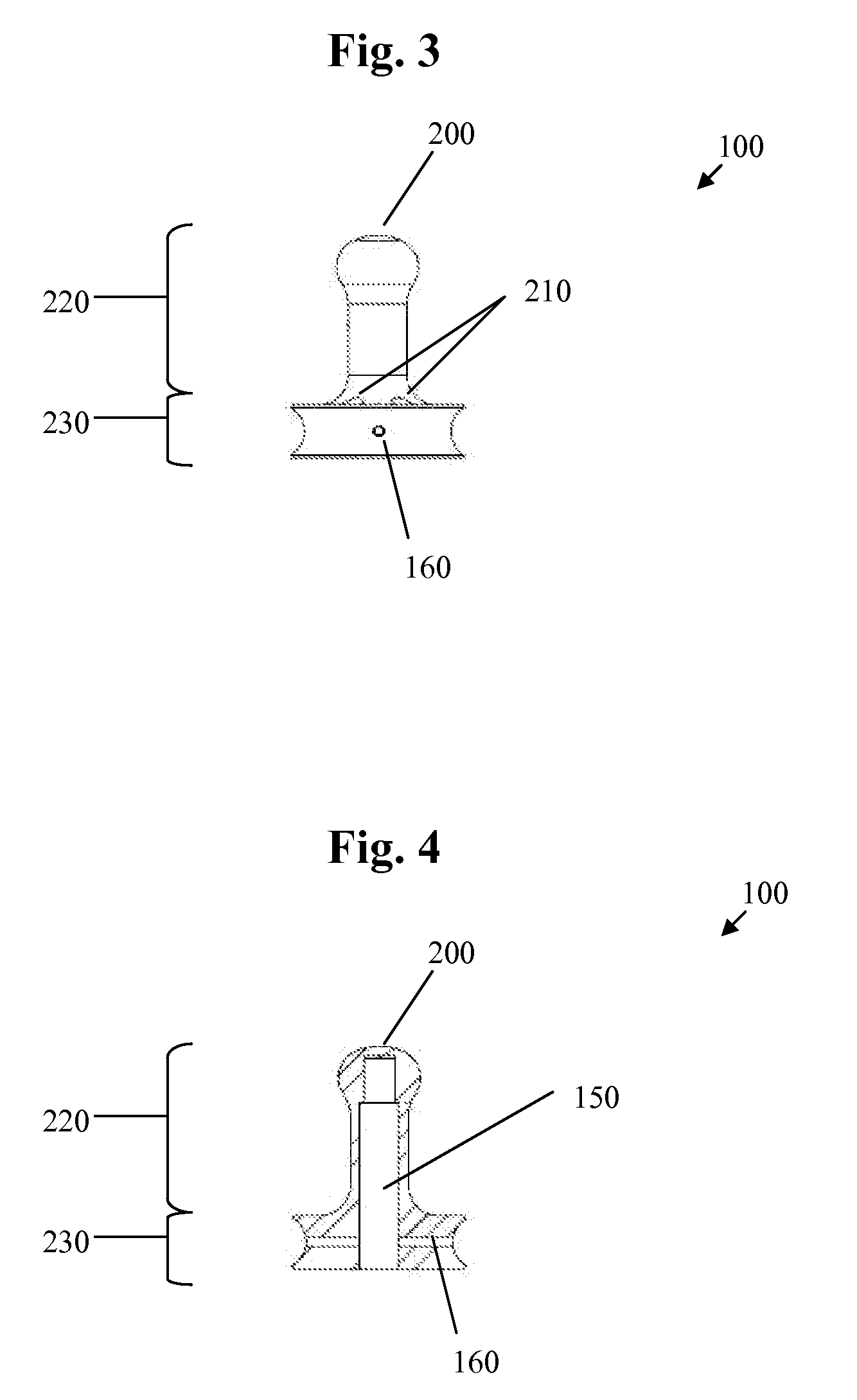Pessary Device
a technology of a stent and a stent body, which is applied in the field of stents, can solve the problems of urination loss control, tissue weakening, and creating a tremendous economic and hygienic burden
- Summary
- Abstract
- Description
- Claims
- Application Information
AI Technical Summary
Benefits of technology
Problems solved by technology
Method used
Image
Examples
Embodiment Construction
[0038]The invention disclosed herein is an improved inflatable pessary wherein one embodiment within the scope of the present invention is generally depicted in FIGS. 1-7. The present inventive inflatable pessary 100 may comprise a main stem 110 having a distal smaller diameter section 220 and a proximal larger diameter section 230, an inflatable bladder 120 disposed about the outer circumference of the proximal larger diameter section 230, a plug 130, a check valve 140 axially disposed within the distal smaller diameter section 220, a main central passage 150 axially spanning between the distal smaller diameter section 220 and the proximal larger diameter section 230, an inflatable bladder volume 170 defined by the inflatable bladder 120, at least one secondary fluid passageway 160 connecting the main central passage 150 to the inflatable bladder volume 170, a deflation nipple 180 disposed at the distal end of the main stem 110, at least one vent port 190 allowing for deflation and...
PUM
 Login to View More
Login to View More Abstract
Description
Claims
Application Information
 Login to View More
Login to View More - R&D
- Intellectual Property
- Life Sciences
- Materials
- Tech Scout
- Unparalleled Data Quality
- Higher Quality Content
- 60% Fewer Hallucinations
Browse by: Latest US Patents, China's latest patents, Technical Efficacy Thesaurus, Application Domain, Technology Topic, Popular Technical Reports.
© 2025 PatSnap. All rights reserved.Legal|Privacy policy|Modern Slavery Act Transparency Statement|Sitemap|About US| Contact US: help@patsnap.com



